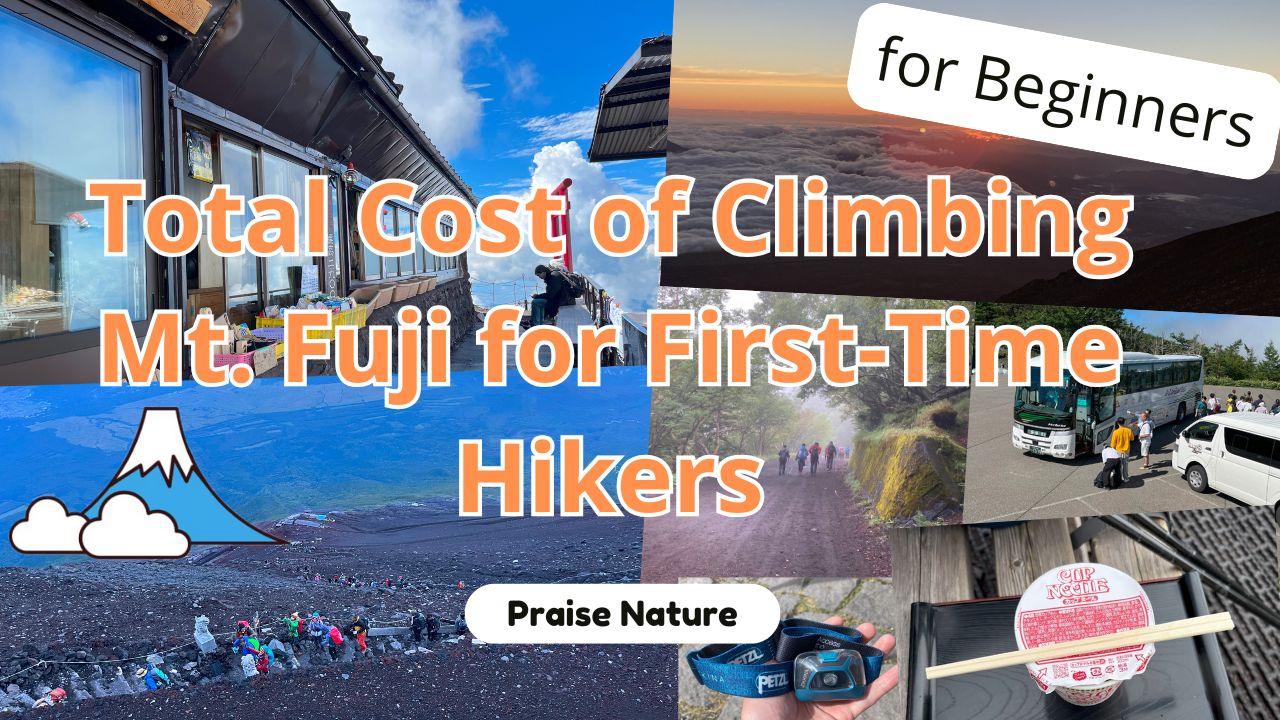If you're a beginner planning to climb Mt. Fuji, we highly recommend a 2-day hike with an overnight stay in a mountain hut instead of a one-day round trip.
For first-timers, the total cost of a 2-day Mt. Fuji climb with one night in a hut typically ranges from ¥20,000 to ¥25,000 per person.
This is just an estimate, as actual costs vary depending on factors like the gear you already own, whether you rent equipment, and where and how you buy your meals.
First-time climbers may need to purchase or rent a variety of gear, which can significantly affect the total budget.
Keep in mind that climbing Mt. Fuji also involves smaller, miscellaneous costs—such as shuttle bus tickets due to car restrictions near the 5th Station, paid toilet use, and optional conservation donations.
In this article, we’ll give you a detailed cost breakdown based on an actual Mt. Fuji climb using the Yoshida Trail with an overnight hut stay.
Total Cost of Climbing Mt. Fuji
Here's a breakdown of the actual expenses for a 2-day Mt. Fuji hike starting from the 5th Station using the Yoshida Trail. Transportation to the base of the mountain (e.g., from Tokyo to Mt. Fuji) is not included.
Note that equipment rental fees and meal costs can vary depending on individual needs.
Also, the trail fee is only required when using the Yoshida Trail—it doesn’t apply to other routes like Fujinomiya.
| Expense | Cost (in yen) |
| Mountain hut stay (8th Station – Ganso Muro) | \12,000 |
| Gear rental (headlamp, rainwear) | \3,950 |
| Shuttle bus (round trip) | \2,500 |
| Parking at Mt. Fuji’s base | 1,000 |
| Mt. Fuji Conservation Donation (optional) | 1,000 |
| Toilets (tip system, 4 uses x ¥300) | 1,200 |
| Meals (day 1 lunch, day 2 lunch) | 2,000 |
| Trail fee (Yoshida Trail only) | 2,000 |
| Total | 25,650 |
Mountain Hut Stay on Mt. Fuji
For first-time climbers, we strongly recommend staying overnight in a mountain hut.
While a one-day round trip is technically possible, the standard (non-stop) hiking time is over 10 hours (ascent: 6 hrs 10 min, descent: 4 hrs). This pace is only realistic for experienced, physically fit hikers.
Staying in a hut gives your body time to adjust to the altitude, rest, and recover energy, making the hike safer and more enjoyable.
Sleeping areas are compact and separated only by a curtain. Most huts provide a pillow, blanket, and sleeping bag.
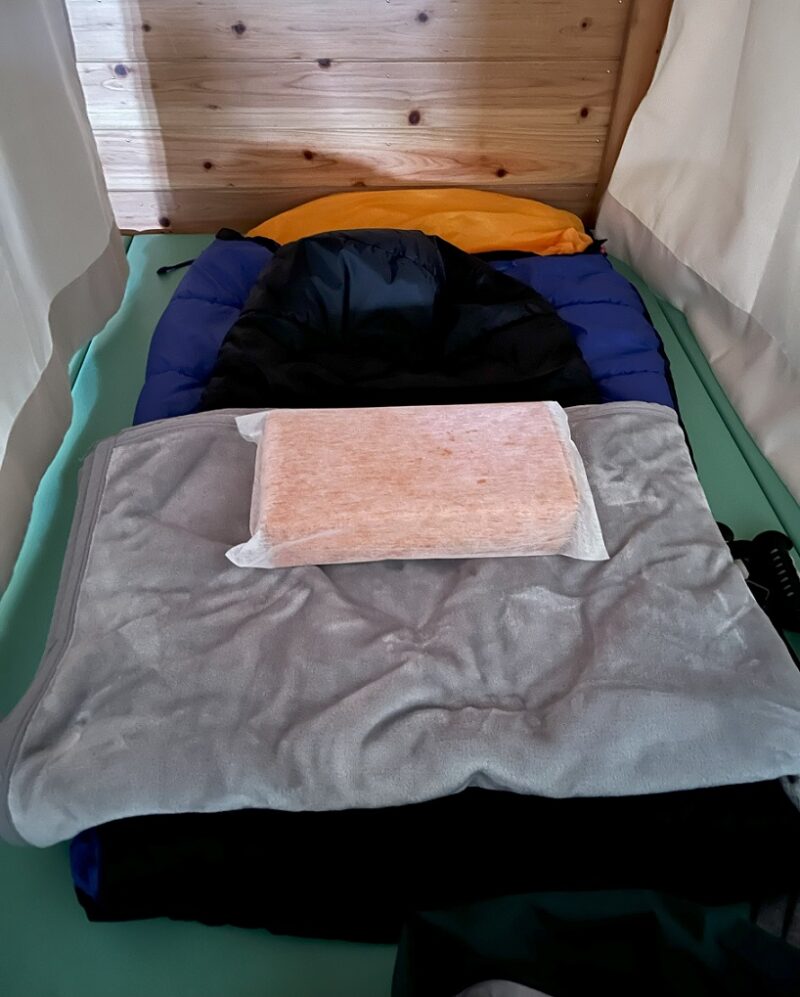
Huts are located along all four major Mt. Fuji trails. Prices range from ¥10,000 to ¥13,000 per night per person, typically including dinner and breakfast or a packed lunch.
Dinner usually consists of curry rice or beef bowls.
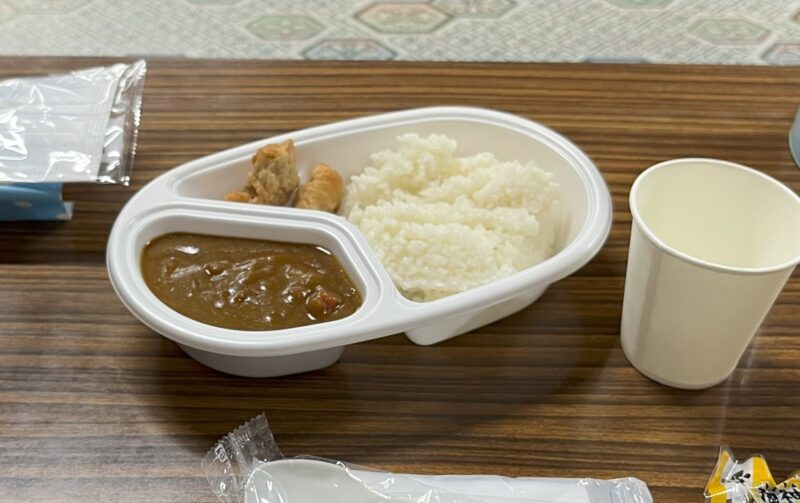
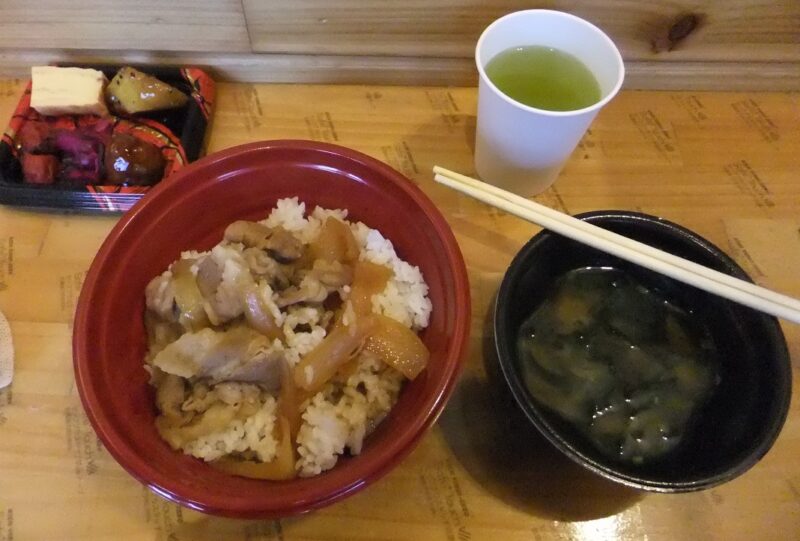
Due to limited water supply on the mountain, there are no showers or baths. Some huts allow minimal face-washing; others do not.
Charging smartphones is generally possible. Some huts offer outlet access at each sleeping area, while others have shared charging stations with portable power supplies.
Toilets operate on a tip system (¥100–¥200), but are often free for overnight guests.
Gear Rental
Climbing Mt. Fuji—and any mountain—requires proper gear.
You’ll need items like a backpack, hiking boots, hat, trekking poles, water bottle, rainwear, sunglasses, and a headlamp. These improve both safety and comfort.
Even seasoned hikers may not own all the necessary items for Mt. Fuji, especially gear like headlamps or rainwear. In such cases, renting equipment is a great option.
For my climb, I rented only the rainwear and headlamp, which I usually don’t need on shorter hikes.
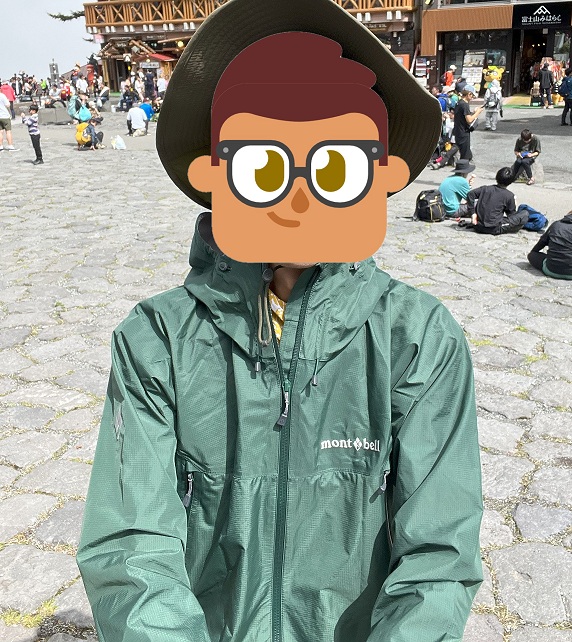
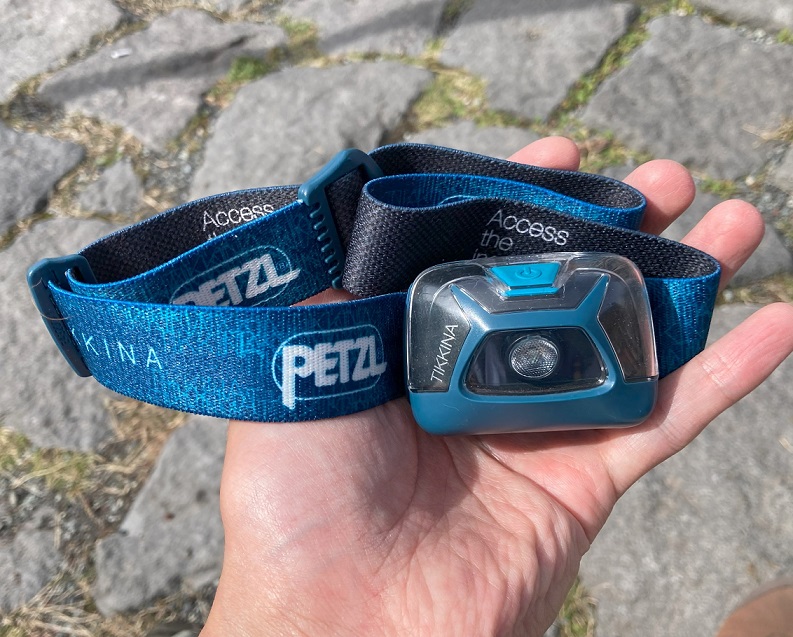
I rented from a shop located at the 5th Station on the Yoshida Trail—the process was smooth and convenient. It’s easy to pick up and return gear right at the trailhead. There are also rental shops on the Fujinomiya Trail.
You can rent a full gear set, including hiking boots, backpack, rainwear, trekking poles, headlamp, and gaiters, for around ¥12,000. You can also add trekking pants, fleece layers, and tights for an additional cost.
Gear rental is perfect for travelers who:
Items you should bring yourself include:
- Socks: Thick, quick-drying athletic socks work well. If you don’t own any, consider buying a pair.
- Base layers (innerwear): Long-sleeved, lightweight, moisture-wicking tops are ideal.
- Water bottle: You can use a PET bottle, but a dedicated bottle is easier to carry and refill.
Shuttle Bus
During Mt. Fuji’s summer climbing season, private cars are not allowed on the road to the 5th Station.
To access the trailhead, you’ll need to take a shuttle bus or taxi.
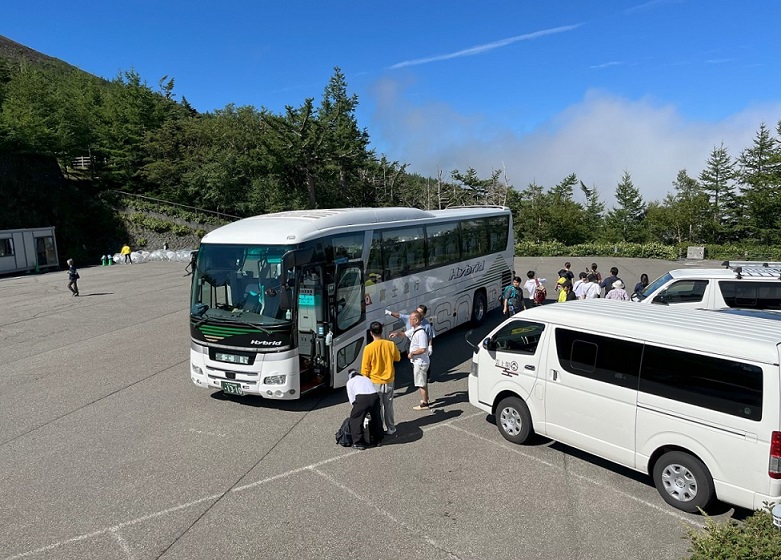
There are four routes to the summit of Mount Fuji, but on all routes, there are restrictions on private vehicles on the public roads up to the 5th station trailhead.
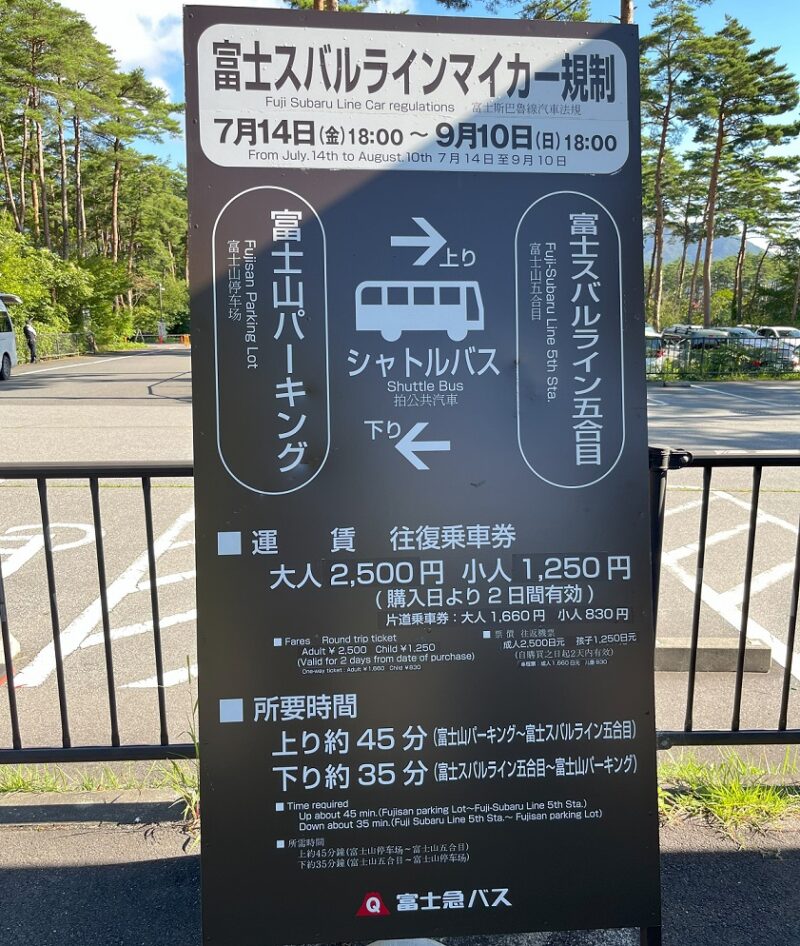
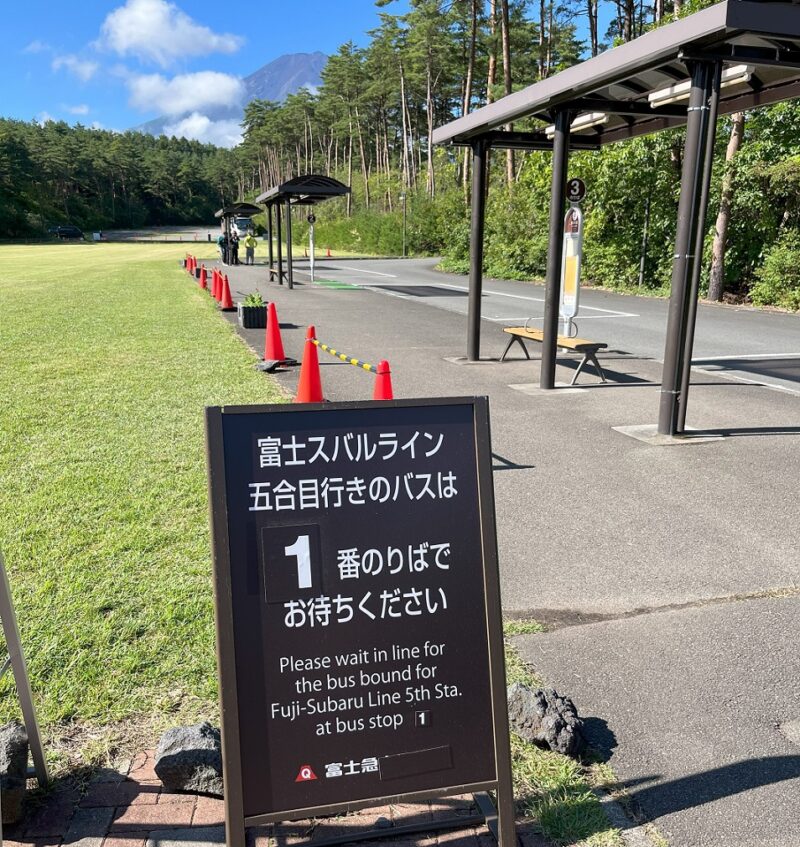
Buses operate only during certain hours, so if you plan to arrive at the 5th Station early in the morning or late at night, you’ll need to use a taxi, which is more expensive.
Parking at the Base of Mt. Fuji
Since cars can’t reach the 5th Station during climbing season, drivers must park at designated lots near the base.
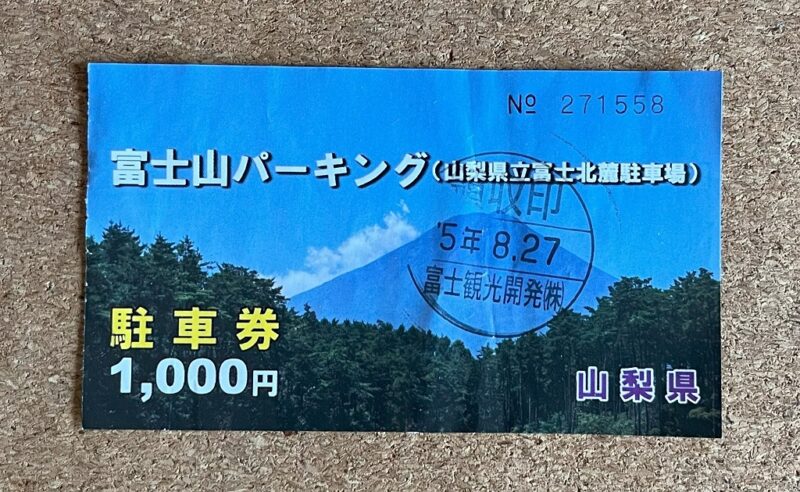
You can park at any nearby lot, but using the one that connects directly to the shuttle bus stop is the most convenient option.
Mt. Fuji Conservation Donation
As you hike from the 5th to the 6th Station on Mt. Fuji, you may be invited to make a voluntary contribution to the Mt. Fuji Conservation Fund.
This is a donation, so payment is not required. However, if you do contribute, you'll receive a wooden tag as a conservation supporter’s certificate and a compact Mt. Fuji hiking guidebook.
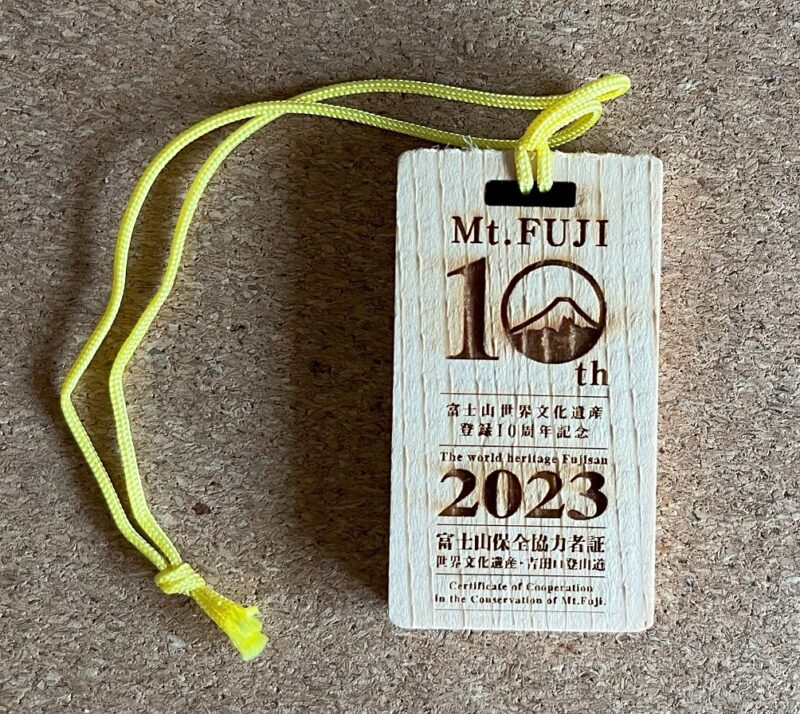
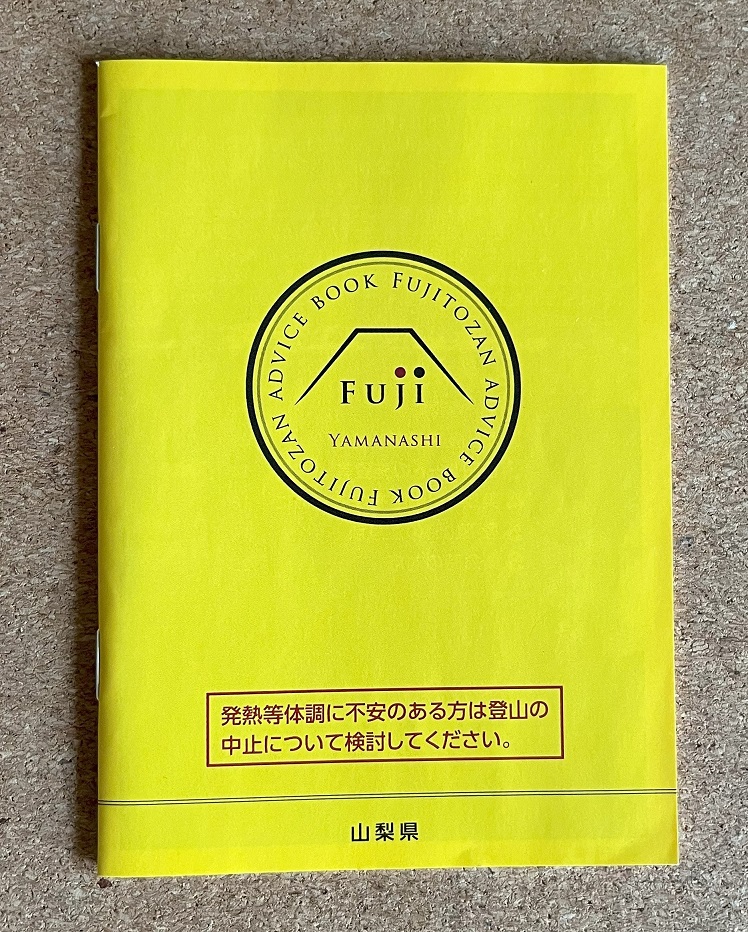
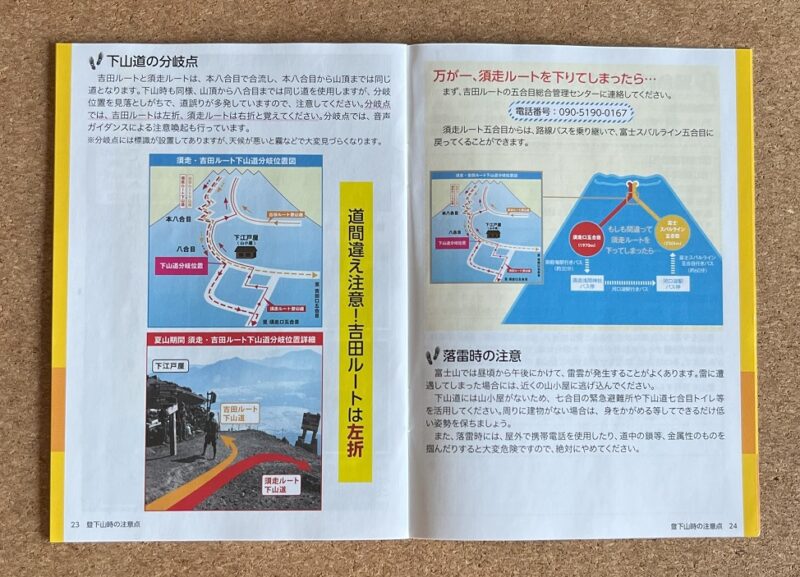
The wooden tag can be stamped with your climbing date and used to brand a commemorative seal at the shrine on the summit.
The booklet provides essential tips and safety information about the hike. It also includes warnings about spots where it's easy to take a wrong turn—making it especially helpful for first-time climbers.
The suggested donation is ¥1,000, and you can pay in cash or by credit card.
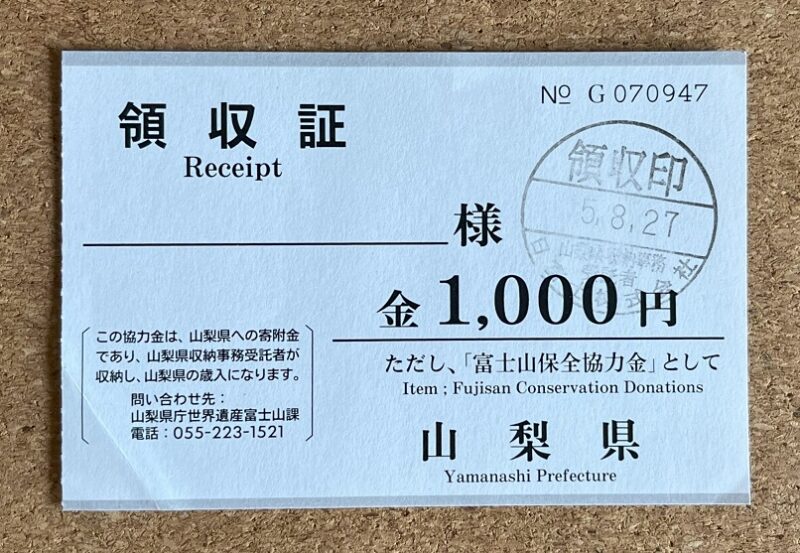
Another benefit: if you wear the wooden tag in a visible spot (like on your backpack), you won’t be asked for a donation again as you continue your climb.
Overall, we highly recommend making this contribution, especially if it’s your first time hiking Mt. Fuji—it’s both helpful and meaningful.
Toilet Fees
Unlike many mountain trails, Mt. Fuji’s routes are well equipped with toilets.
However, most of the toilets operate on a tip-based system, meaning you'll need to pay a small fee to use them.
You’ll often see signs like “Toilet tip ¥300” posted near the facilities.
There are generally two types of toilets:
- Ones with a tip box, where payment is encouraged but not enforced.
- Others with a gate or attendant, where payment is required to enter.
To be safe, assume you’ll need to pay a tip and bring plenty of ¥100 coins with you. It's a small price to support cleanliness on the trail and protect the mountain environment.
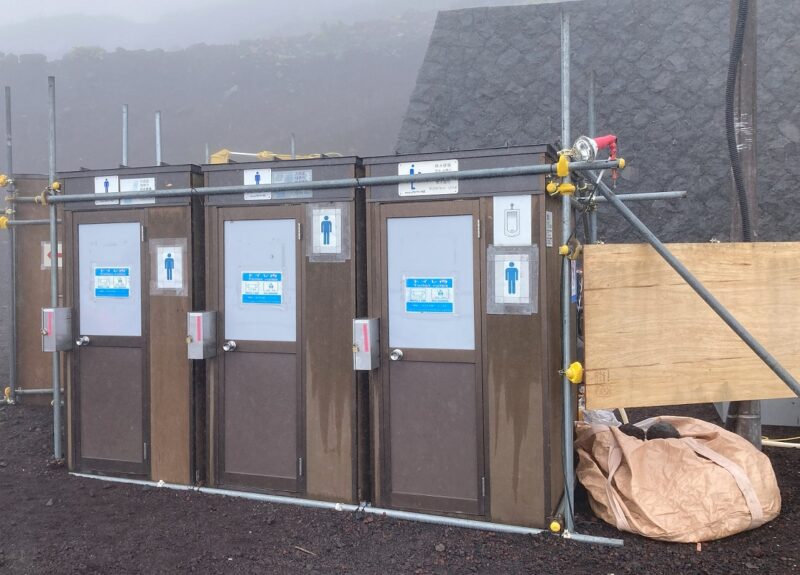
Food Costs
You’ll find a surprising number of food options at the 5th Station before your hike, and also at mountain huts along the trail.
If you're staying in a hut overnight, dinner and breakfast (or a packed lunch) are usually included in the accommodation fee.
That means for a 2-day, 1-night Mt. Fuji hike, you’ll need to prepare or purchase lunch for day one and lunch for day two yourself.
If you're new to hiking or want to keep your backpack light, we recommend buying meals on the mountain rather than carrying them from home.
There’s actually a wide variety of food available, especially at the 5th Station and the lower huts.
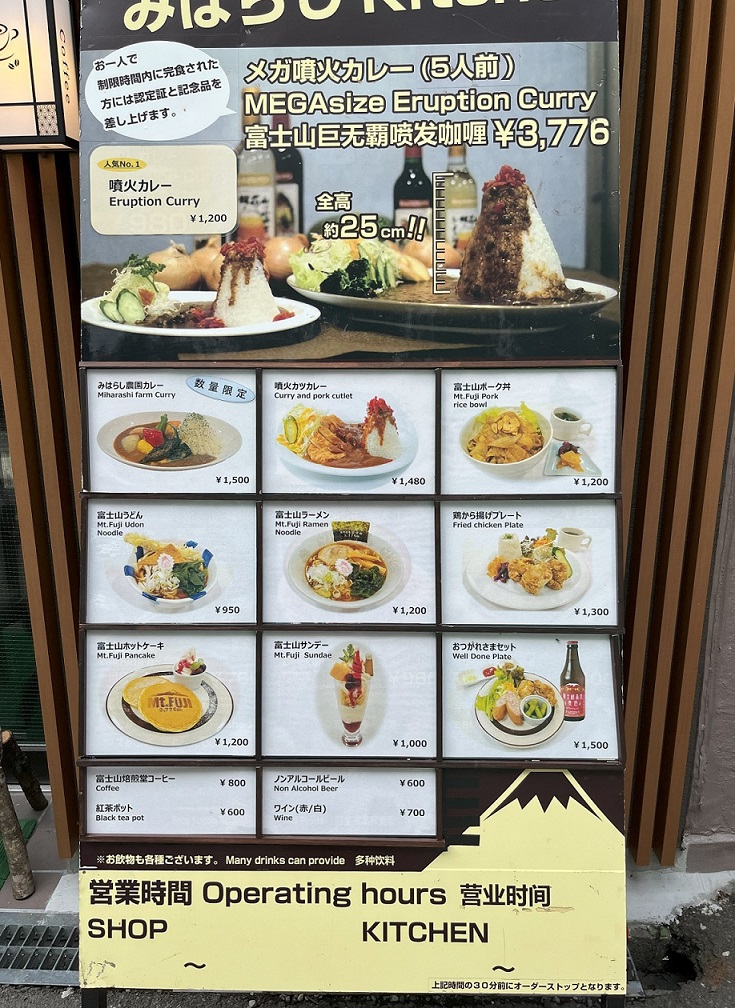
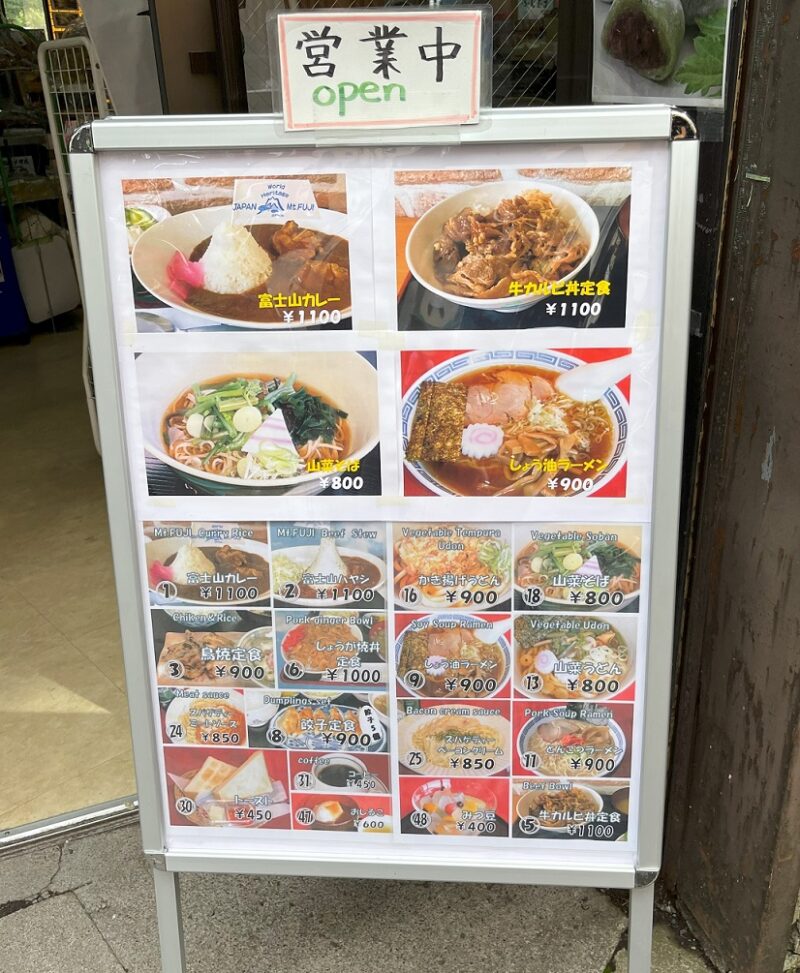
However, keep in mind that the higher you climb on Mt. Fuji, the more expensive things tend to get.
For example, a NISSIN Cup Noodles at Fuji-Ichikan, a hut located at the 7th Station, costs as much as ¥600.
(That price includes hot water, chopsticks, and waste disposal—you can eat it right there, and they'll take care of the trash afterwards.)
The view from the 7th Station is truly breathtaking.
So even at ¥600, enjoying a hot cup of noodles while taking in the stunning scenery feels like a special experience that’s totally worth it.
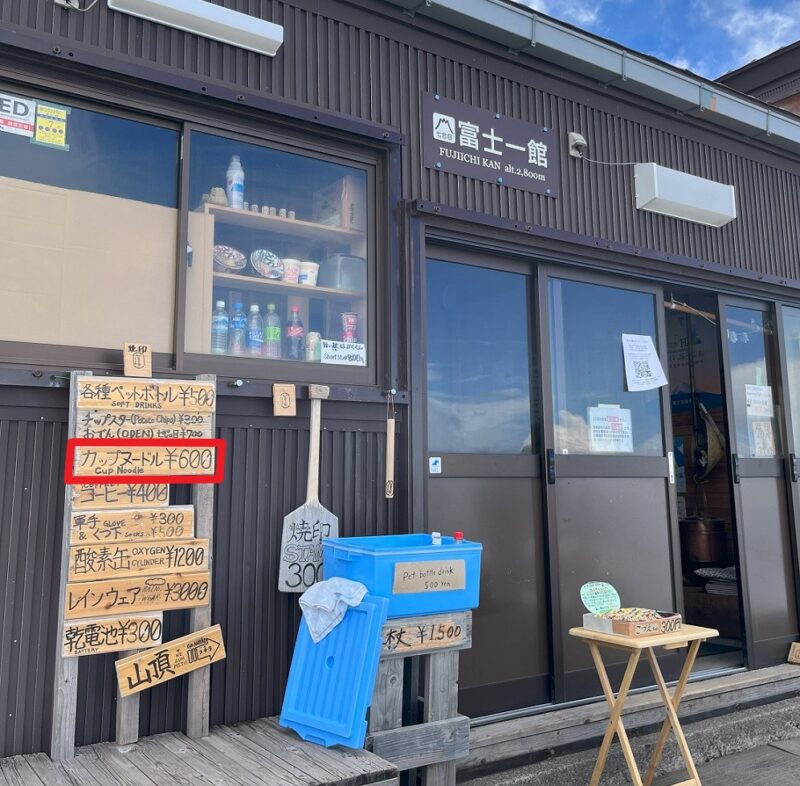
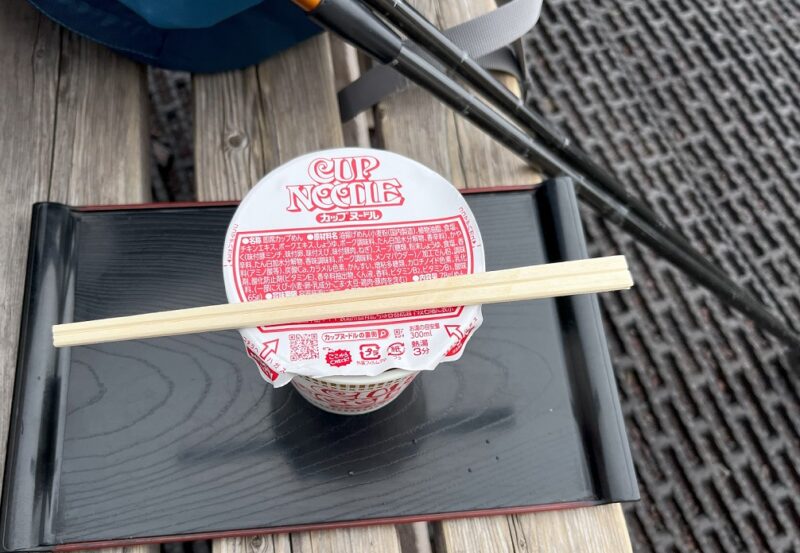
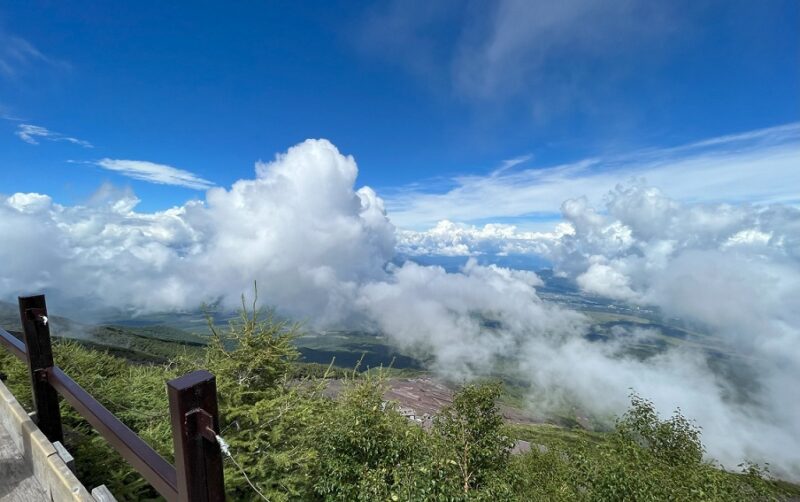
Summary
Perfect for Mt. Fuji climbers who need rental gear.
・You can rent everything from backpacks to rainwear—they have it all!
・Great option if you only go hiking once a year.
・Save money and pack light by renting instead of buying.

